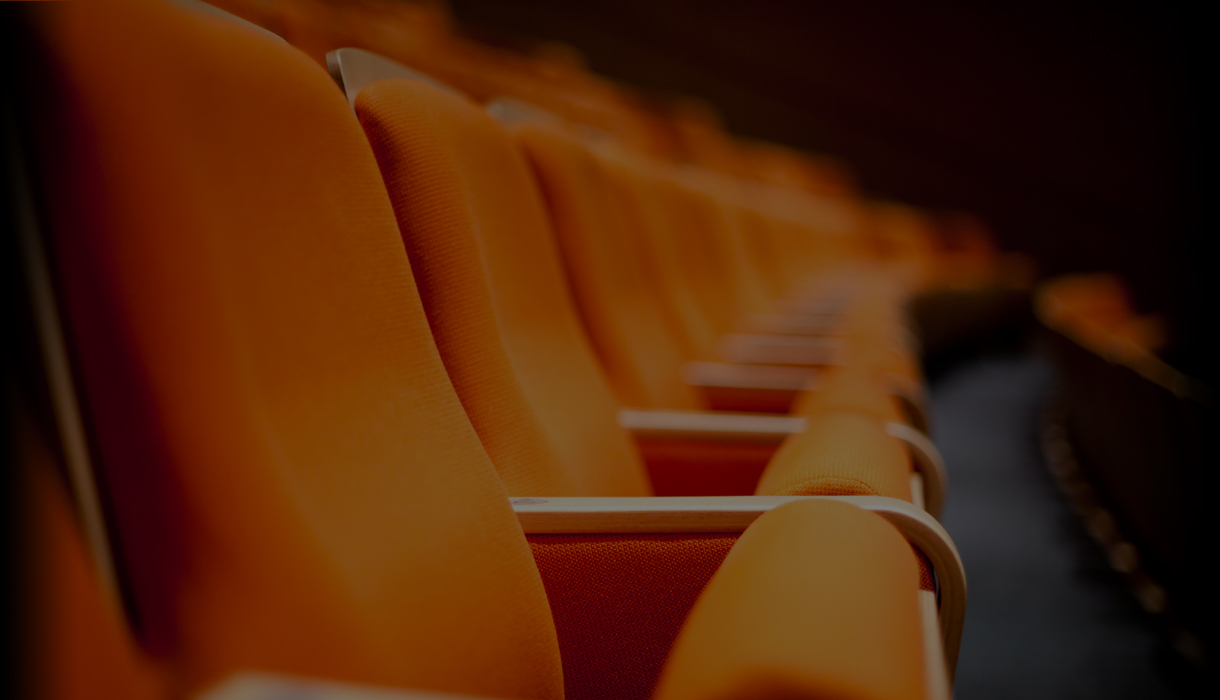 |
October 2025
Germany is internationally regarded as the country of theatre. Few countries are able to match the density of the local theatre infrastructure: almost every major city comes equipped with a municipal theatre, a permanent venue with its own permanent ensemble, workshops, administration, technical facilities and a director at the top. These institutions are mostly publicly owned, financed by the cities or federal states, and have formed the backbone of German theatre for over a century.
These theatres draw on a centuries-old tradition. As early as the 17th century, kings and lords in the German lands built their own theatres and employed entire ensembles. These developed into institutions that came to be known as “Hoftheater”, usually under the direction of an artistic director and supported by the local authorities. In the 18th and 19th centuries, with the rise of the bourgeoisie in German cities, the first municipal theatres were founded and started shaping the hierarchical system that still exists today. A commonly called “Intendant” at its top assumes the role of both artistic and administrative director. The artistic team of directors and dramaturgs reports to them and, in turn, supervises the performers: the ensemble. The repertoire consists mainly of the classical German and European theatre canon: Goethe, Schiller, Ibsen, Brecht, Shakespeare, Kleist, Büchner and co. However, in recent years, more and more contemporary authors have also been performed.
The municipal theatre is made up by institutions with astonishing adaptability, but also with clear limitations. For while they are designed to display stability and repertoire, they are repeatedly confronted with their own limitations when it comes to new forms, voices or working methods. In recent years, much has been attempted to change theatre from within. To open up the structure, trying to reach other audiences not only the academic and social elites, and to move beyond the ivory tower. However, the structure is so engrained that only small steps can be taken, and not all stakeholders are willing to confront their own criticism of power. It remains to be seen what changes will take place in the coming years.
The emergence of the independent scene in Germany: counter-model and laboratory
The “Freie Darstellende Künste” (independent performing arts), as the independent scene is known in Germany, emerged from a desire for change and politicisation. Its roots lie in the late 1960s, in the aftermath of the student revolts. At that time, artists who no longer wanted to see theatre as a place for representing the canon but as a space for social exchange, assembled. Theatre was to become political again—not through theses, but through form.
The early independent groups, inspired by political collectives, happening art, performance art and international artists, sought a different kind of theatre practice: participatory, process-oriented, thematic rather than text-based, and often anchored in the public space.
However, it was not just about artistic change but also about a change in working methods. The wish was to no longer work in a hierarchical system, but rather to perform theatre together in groups on an equal footing: less hierarchy, more collective; less fixed structures, more flexibility; less canon, more experimentation.
This difference was never of just an aesthetic nature but deeply political. While municipal theatre—despite all criticism of its content—remained surprisingly conservative in its organisational form, the independent scene attempted to democratise its production methods as well. Decisions were to be made jointly, power was to be shared, and artistic processes were to be designed to be more open. At the same time, this meant uncertainty: wherever no artistic director bears responsibility, there will be constant negotiation of positions. But it was precisely this fragility that gave rise to an energy that unleashed ideas, enabled experimentation, and produced new forms of theatre.
Various groups formed and opened up their spaces. In the mid-1980s, theatre professionals in North Rhine-Westphalia joined forces and founded the Büro für freie Kultur (Office for Independent Culture), which later became the NRW Landesbüro Freie Darstellende Künste e.V. (North Rhine-Westphalia State Office for Independent Performing Arts). Dance professionals also increasingly worked outside municipal institutions and built up their own networks. This led to the founding of the nrw landesbuero tanz (North Rhine-Westphalia State Office for Dance) 30 years ago.
From niche to structure
In the 1990s, the independent scene became institutionalised, production houses and venues such as the Forum Freies Theater Düsseldorf, Ringlockschuppen Ruhr Mülheim, Theater im Pumpenhaus Münster, tanzhaus nrw Düsseldorf, and others emerged, who are still among the most important production houses in the independent scene today. During the 1980s and 90s, many among the newly-founded groups specialised explicitly in producing theatre for children and youngsters; among them Theater Marabu in Bonn, the Comedia Theater in Cologne, and the HELIOS Theater in Hamm. Over time, more and more artists joined forces in order to work and perform in the independent scene. Via their associations, they gradually fought for better funding and support from local and state authorities.
However, it was not only a different structure that emerged in the independent scene, but also a different kind of aesthetic compared to the text-based theatre of the state theatres. A variety of forms emerged, which Hans Thies Lehmann summarises under the term post-dramatic theatre. The theatre text was no longer the main focal point; instead, it could also be the form or the theme that could become the starting point of the performance. Often not only the structure of the hierarchy was questioned, but also its form, aesthetics, and rules of theatre itself. Always in search of the new in a never-ending experiment.
At the same time, academic training institutions emerged that specifically trained students for the independent scene—such as Applied Theatre Studies in Giessen, Staging of the Arts and Media in Hildesheim, and Scenic Research in Bochum. These courses not only produced artists, but also enabled a new way of thinking about theatre: theatre as research, as a process, as aesthetic knowledge production.
Today, the scene itself is far more connected, diverse, and professional than in its early days. The NRW Landesbüro Freie Darstellende Künste alone has over 400 members—individual artists, groups, and production houses. Their work ranges from dance, performance, music theatre, new circus, object and puppet theatre to participatory formats with communities.
Left: BOYBAND (2021) by notsopretty (Photo: Anna Spindelndreier);
Right: Die Nacht in der wir Männer wurden (The Night We Became Men, 2024) by S. Rudat & the (i)dentityteam (Photo: Oliver Stroemer)
Between idealism and precariousness
Those who work as freelance artists in Germany mostly work on a project basis. This means that new funding must be applied for each production—usually from public funding programmes. It is always a mix of different sponsors. The local authority is required to provide funding in order for the state of North Rhine-Westphalia to contribute additional funds. And only with municipal and state funding can one apply for federal funding, meaning there is no continuous institutional basis, but rather a sequence of funding that sometimes comes through and sometimes it doesn't.
This project logic shapes the economic situation, but also the artistic work itself. It forces flexibility and constant self-explanation: every project must be re-justified, contextualised, and legitimised. Sometimes the application process seems to take longer than the rehearsals themselves. And at the same time it is imperative we remain up to date with current social discourse in order to be eligible for funding at all.
This structural uncertainty has a paradoxical consequence: it turns the independent scene into a laboratory for forms, themes and aesthetics that are later adopted by municipal theatres. Some call it the think tank of German theatre. Many developments that seem self-evident in large theatres today, for example documentary or post-dramatic approaches, hybrid formats between theatre, dance, and media art, have their roots in the independent scene.
But the price is high. Working conditions in the independent scene are often precarious: low wages, insecure employment, hardly any social security. Self-exploitation is considered inevitable. This reality is part of a paradoxical situation: while the independent scene is aesthetically avant-garde, it operates on the economic margins.
Theatre as social practice
The independent scene has achieved something that goes beyond aesthetics: it has brought theatre back into the heart of society. While municipal theatre often operates in symbolic spaces—the auditorium as a bourgeois public sphere—the independent scene engages with tangible social contexts.
Many independent projects make use of participatory methods, involving residents, young people, communities, or senior citizens, thus turning theatre into a form of social practice. It is not simply about performance, but about encounter. This shift has fundamentally changed the understanding of theatre: it is no longer just art in a narrow sense, but also a form of community work.
At the same time, this openness is itself a challenge. The more theatre deals with social issues and communities, the greater the risk that it will be perceived as socio-educational. The balance between aesthetic freedom and social responsibility remains a constant process of negotiation.
From counter-movement to second pillar
Today, it is almost impossible to talk about German theatre without considering the independent scene. What once began as resistance to municipal theatre has developed into an independent structure that interacts with the institution. Many artists move between both worlds, and many municipal theatres are open to collaborations with independent groups. The line between “institutional” and “independent” has become increasingly blurred—and yet the difference in the logic of working remains noticeable.
Municipal theatre produces within its walls, with the guarantee of permanent staff, predictable institutional funding, and a clear division of responsibilities. The independent scene produces across spaces, disciplines, and funding cycles, with changing alliances, international networks, and open processes. Both systems have their strengths—one offers stability, the other flexibility. And perhaps it is precisely this tension that makes the German theatre system so remarkable.
本網站內一切內容之版權均屬國際演藝評論家協會(香港分會)及原作者所有,未經本會及/或原作者書面同意,不得轉載。










